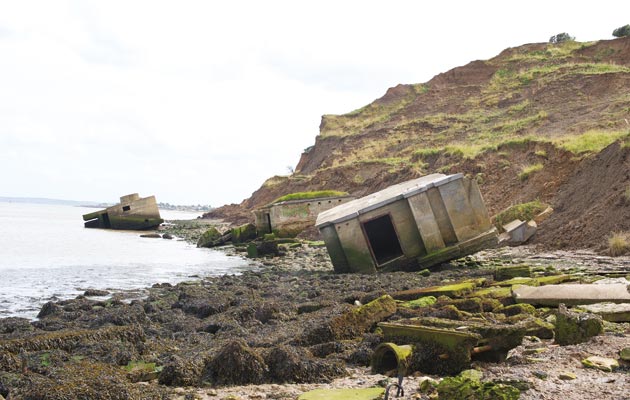|
|
||
|
Britain’s recent past is illuminated by a survey of some of its bleakest rural buildings, finds Charles Holland In recent years, there has been a flourishing of landscape writing that focuses on marginal and overlooked places. Such writing is far more likely to focus on the Cold War defences of East Anglia or the oil refineries of the Thames estuary than more traditionally picturesque landscapes in the UK; it tends to fuse a number of artistic and literary concerns including multi-layered readings of place, forgotten social histories and a love of ruins. Architect, writer and curator Corinna Dean uses the term “slacklands” to describe these spaces. Her book provides a guide to 31 sites scattered across the UK, almost all of which have outlasted their initial function and fallen into some form of disrepair. There are internationally significant sites, such as the former US cruise missile base at Greenham Common in Berkshire (now a scheduled ancient monument) and Gillespie Kidd and Coia’s partially ruined St Peter’s Seminary at Cardross, as well as more obscure, and personal, choices such as the Walpole Bay tidal pool in Margate. The fascination for these places lies partly in the history they embody: they are spatial and material manifestations of changes in industry, technology, leisure and geo-politics. The bombed-out houses of the Ministry of Defence-owned mock village of Copehill Down illustrates shifts in political allegiances and military interventions. The original houses were modelled on an east European village in a banal, pared-down style reminiscent of the paintings of Julian Opie. These have recently been supplanted by the kind of shanty towns and makeshift military encampments that might be found in Afghanistan or Iraq. The fate of Victor Pasmore’s extraordinary Apollo Pavilion in the new town of Peterlee in County Durham traces the arc of post-war optimism, through disillusion in the 1970s, to a more recent rapprochement with the modernist past. Paradoxically, many of these sites represent a past that appears more future-orientated than our present. Edinburgh practice RMJM designed Torness Power Station with a strong compositional sense of its coastal setting; there was a time when a nuclear power station was a worthy vehicle for heroic modernist architecture. The photographs are beautiful and deadpan, capturing the sites’ lack of traditional appeal as well as their striking aesthetic, which is sometimes unintentional; the former water softening plant in Newnham, Kent has a raw sculptural quality that rivals the best brutalist architecture. Dean’s straightforward and informative text describes the history of each site and gives basic instructions for how to find them. For those of a certain inclination, no weekend need now be free of a trip to an abandoned oil jetty or a decommissioned dynamite factory. This book is part of a larger project to record these places in the Archive for Rural Contemporary Architecture, an ever-expanding online catalogue. It is tempting to immediately start adding examples of one’s own; mine would include the remains of the Dunton and Laindon plotlands communities at Basildon in Essex and the slowly disappearing concrete apron of Pegwell Bay Hoverport in east Kent. What they share with Dean’s examples – aside from a melancholic air of decay – is a sense of history that is not part of the normal heritage industry. They offer a reading of the past that doesn’t exclude the scruffy, the bleak, the failed, or even the ugly. The kind of writing and photography these slacklands inspire is therefore a fusion of fictional narratives and sociological research, landscape writing that is highly aware of the big themes of contemporary life, yet grows out of the personal experiences that we have of them. |
Words Charles Holland
Slacklands: a guide to rural
Images: Corinna Dean/Archive for Rural Contemporary Architecture |
|
|
||


















